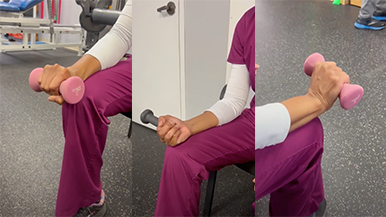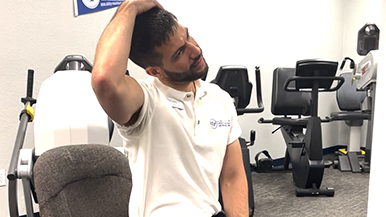What is Arthritis of the Thumb?
 Arthritis is a condition that irritates or destroys a joint. The most common type of arthritis to affect the joint at the base of the thumb (the basal joint) is osteoarthritis, which is sometimes referred to as degenerative or “wear-and-tear” arthritis.
Arthritis is a condition that irritates or destroys a joint. The most common type of arthritis to affect the joint at the base of the thumb (the basal joint) is osteoarthritis, which is sometimes referred to as degenerative or “wear-and-tear” arthritis.
The joint near the wrist at the base of the thumb and the fleshy part of the thumb allow it to swivel, pivot, and pinch, giving your hand the ability to grip objects. In a healthy joint, smooth cartilage covers the end of the bones allowing the bones to glide easily. Without this cartilage, the bones rub against each other causing friction and damaging the bones and joints. When the cartilage begins to wear away osteoarthritis occurs.
Risk Factors for Arthritis of the Thumb:
There are some risk factors that can exacerbate the pain from arthritis. Being aware of the following circumstances will increase your chance of finding a successful treatment plan before the condition worsens. These factors include:
- Patients age 40 or older
- Females have a higher risk than men
- Certain hereditary conditions, including joint ligament laxity and malformed joints
- Experiencing injuries to your basal joint, such as fractures and sprains
- Performing certain activities and jobs that put high stress on joint
How is Arthritis of the Thumb Treated?
Nonsurgical Treatment
Only in the early stages of arthritis at the base of the thumb will nonsurgical treatment be effective. Your physical therapist or doctor will decide to use one or more of the following:
- Take an anti-inflammatory medication, such as aspirin or ibuprofen, to help reduce inflammation and swelling
- Ice the joint for 5 to 15 minutes several times a day
- Wear a supportive splint to limit the movement of your thumb and allow the joint to rest and heal. The splint may protect both wrist and the thumb. It may be worn overnight or intermittently during the day
- Steroid injection into the joint
- Physical therapy
As arthritis is a progressive degenerative disease, the condition may worsen over time. It is best to seek the advice of a physical therapist and they can help determine the best course of action based on your condition. A physical therapist may refer patients to a doctor for further treatment options depending on the severity of the symptoms.
Surgical Treatment
When nonsurgical treatment is no longer effective, there are surgical options available. The operation can be performed on an outpatient basis, and several different procedures can be used. One option involves fusing the bones of the joint together; however, this will limit movement. Another option is to remove and reconstruct part of the joint using either a tendon graft or an artificial substance. You and your doctor will discuss a treatment plan that works best for you.



